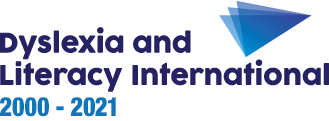Pages in Section 1
Gleaning Meaning from Print
Clearly, the final aim of reading is comprehension, that is to extract meaning from words and text. The meaning of reading however needs to be addressed. Theories of reading have lately accepted that how to access such meanings may either be in the traditional manner – using your eyes and verbal visual print, or through technology, where the ears, or the eyes and the ears are used. Inthatasmuch as EDA advocates that all children should be literate i the traditional understanding of the term, however challenges with this should not become a barrier to learning, and modern technology should also be used. Falzon (2019) reflected that:
With regard to access to learning, technology has improved so much (Schmar-Dobler, 2003), that schools must consider its use to access print (Lysenko & Abrami, 2014). Technology is regarded as the “fourth revolution in the means of production of knowledge following language, writing and print” (Harnad, 1991, p. 39). Warschauer and Matuchniak (2010) report that there is broad consensus among educators, communication scholars, sociologists and economists that “information and communication technologies (ICT) … bridge the interactive features of speech and archival characteristics of writing” (p. 179). https://doi.org/10.1163/9789004394179_007
Similarly the final aim of writing in the broadest sense is to communicate meaning: the production of words, phrases and text which can be comprehended by others in another space and time. Again, this can be handwritten, typewritten or though voice-activation technology.
For the fluent reader, comprehension is a highly complex ability which mobilizes a whole series of processes including the recognition (visual, aural-visual or aural) and understanding of words, general linguistic abilities, prior knowledge of the subject, inference skills, anticipation, and so on.
However, in order to understand what the written words say, it is absolutely essential that the learner develops adequate means of recognizing words rapidly and efficiently. The learner who reads fast and efficiently has to acquire automated mechanisms for identifying words.
Studies show that good young readers rarely use context to identify a word because words are usually identified before contextual information becomes available. It is the poor readers who overly rely on context to identify words in order to compensate for weaknesses in recognizing them. If interest, you may look up the work of Linnea Ehri.
Research findings indicate that good readers who can identify words fast and accurately have more cognitive and attentional reserves with which to grasp and integrate the meaning of the words in order to understand the passage; poor readers who have weaker automatic mechanisms for identifying words have to allocate so much of their cognitive and attentional reserves towards word identification that they have difficulties in building the global meaning of the sentence or text. Overall understanding is then affected.
In sum, the establishment of automatic and fast recognition of words is a pre-requisite for being able to understand written texts, and explains why learners with dyslexia have trouble in appreciating the meaning of printed text.
For this reason the course first addresses the essential stages in learning how to develop mechanisms for identifying words before tackling other processes involved in comprehension.
However, whilst the learner is being exposed to these initial essential stages, reading comprehension should not be ignored, as language development may then be affected. In the learning situation, one can then use technology to help the child develop their reading comprehension, as they would at the same time be trying to improve their reading accuracy and fluency. the educator needs to always strike a fine balance to ensure that traditional reading ability does not act as a barrier to the child’s learning. This learning process is an inclusive strategy as children would be accessing a written text through different modalities, but the learning process of reading comprehension would not be compromised: some would be reading traditionally, and others would be using technology to access the same passage.


